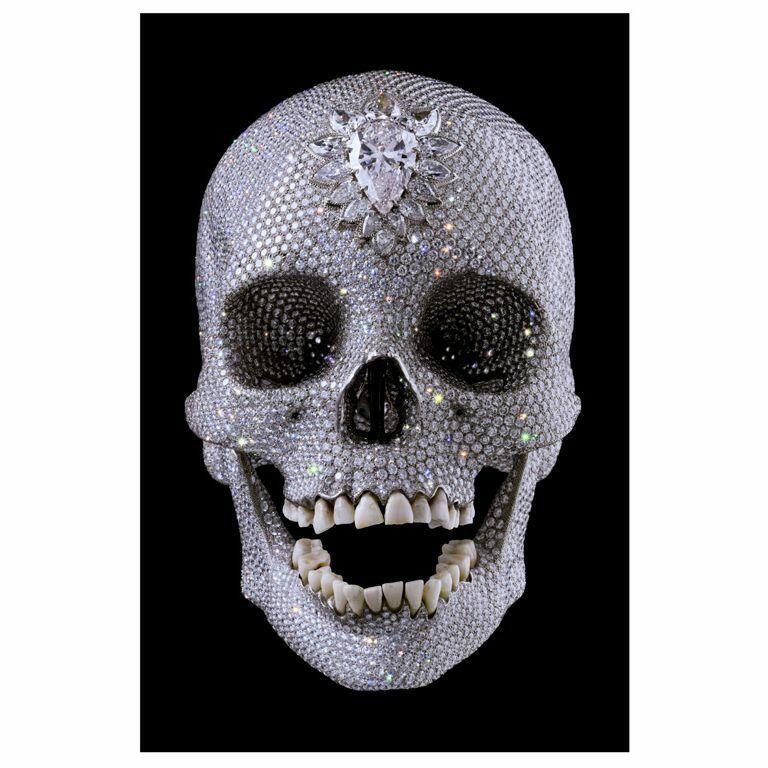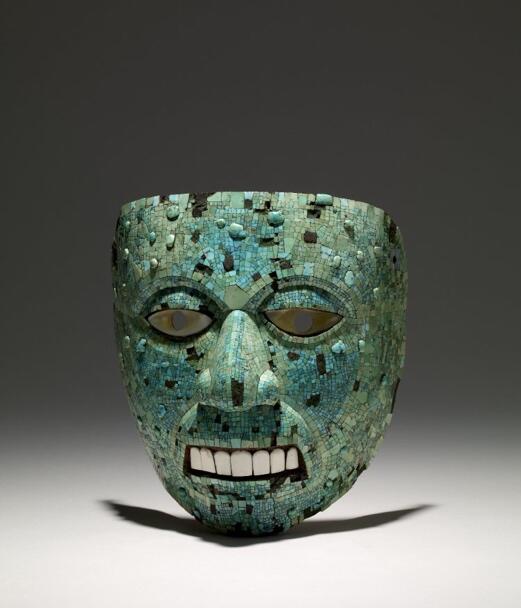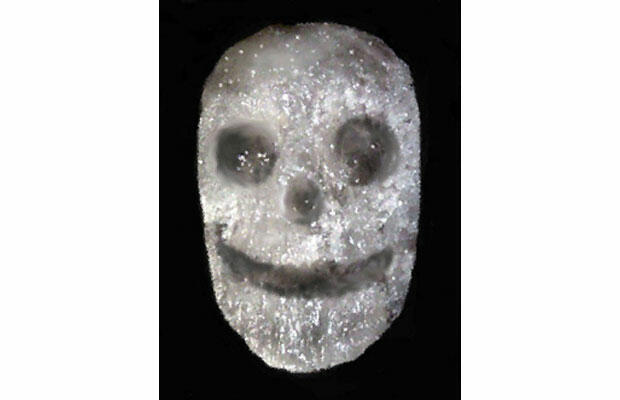Damien Hirst For the Love of God 2007 Diamond Incrusted Skull Postmodern Art
Print Сite this
"For the Dearest of God" Sculpture past Damien Hirst
The piece of art chosen for the electric current exploration is Damien Hirst's sculpture named For the Dear of God (2007). The artwork is fabricated from a platinum bandage of an 18th-century homo skull that was and so encrusted with 8,601 diamonds. The teeth of the skill are original to the skull, which was purchased past the artist in London. The skull'due south brow is adorned with a large pink diamond that is known equally the Skull Star Diamond. The artwork is associated with the concept of memento mori, which means that it is intended to remind its viewers of their ultimate bloodshed.
Nosotros will write a
custom essay
specifically for you
for only $16.05 $11/page
Learn More

The Love of God is highly controversial because its author used a human being skull, a symbol of death and decay, and juxtaposed it with diamonds, which represent wealth and success. Because the subject matter of the artwork is death and is contrary, the use of diamonds is the consummate reverse, the positive and the ridiculous aspect of the sculpture. The social contribution of the artwork is associated with allowing its spectators to question the morality of fine art and money in the long run. Because Damien Hirst has created a controversial brand for himself from the very beginning, For the Dearest of God is a pinnacle of his artistic social commentary both in terms of the money used for its product (£fourteen 1000000) and the subject area matter of the piece. For many, the skull encrusted in existent diamonds worth millions will announced icky and distasteful; even so, it is crucial to understand that this was the author's intention (Jones, 2011). While in that location are no reports regarding the censoring of the artwork, the controversy surrounding the diamond skull was extreme at the time of the release. However, if one understands the intentions of the author and the intentional exaggeration of the subject affair, it is possible to find value in the piece beyond its monetary cost. The subject of censorship is important to discuss because art is an expression of i's freedom of speech, which should never be stifled. At that place are several notable influences on For the Dear of God. The first example is the Mask fabricated from cedar wood and covered in mosaic made from turquoise (run into Figure 2). Another notable example is the artwork by John LeKay named Spiritus Callidus #2 (run across Figure 3).


Even though Hirst was accused of plagiarism for several of his artworks and installations, it is important to note that For the Dearest of God was the inspiration for many other pieces of art that used skulls every bit the key subject matter. The diamond skull should be considered art because of its aesthetic value also every bit the social commentary aspect of the piece. Hirst wanted to inspire the viewers of his fine art slice to be optimistic about life even though it is finite: "I idea what was the maximum you tin put confronting death, and diamonds came to listen […] Considering we are dealing with death that is and so negative it has to be totally positive, and you can't cut corners, it just has to be ridiculous in its perfection" (Tate, 2012). Every bit mentioned by Jones (2011), "contemporary art should reflect the gimmicky world, […] and fine art turned into money, which is why the diamond skull visually sums up the madness on the eve of an economic downfall" (para. three). Existence over the pinnacle and expensive, the diamond skull is a representation of the fact that life is finite and that money has no worth ultimately, no thing how highly people value information technology.
References
For the Beloved of God [Image]. (2007). Web.
Jones, J. (2011). Damien Hirst's skull tasteless? That's the point. The Guardian.
Spiritus Callidus #2 [Prototype]. (n.d.). Spider web.
Tate. (2012). Damien Hirst – For the Love of God. TateShots [Video file].
Go your
100% original paper
on whatsoever topic
washed in as little as
3 hours
Learn More than
The British Museum. (n.d.). The turquoise mosaics.
Source: https://studycorgi.com/for-the-love-of-god-sculpture-by-damien-hirst/
0 Response to "Damien Hirst For the Love of God 2007 Diamond Incrusted Skull Postmodern Art"
Post a Comment